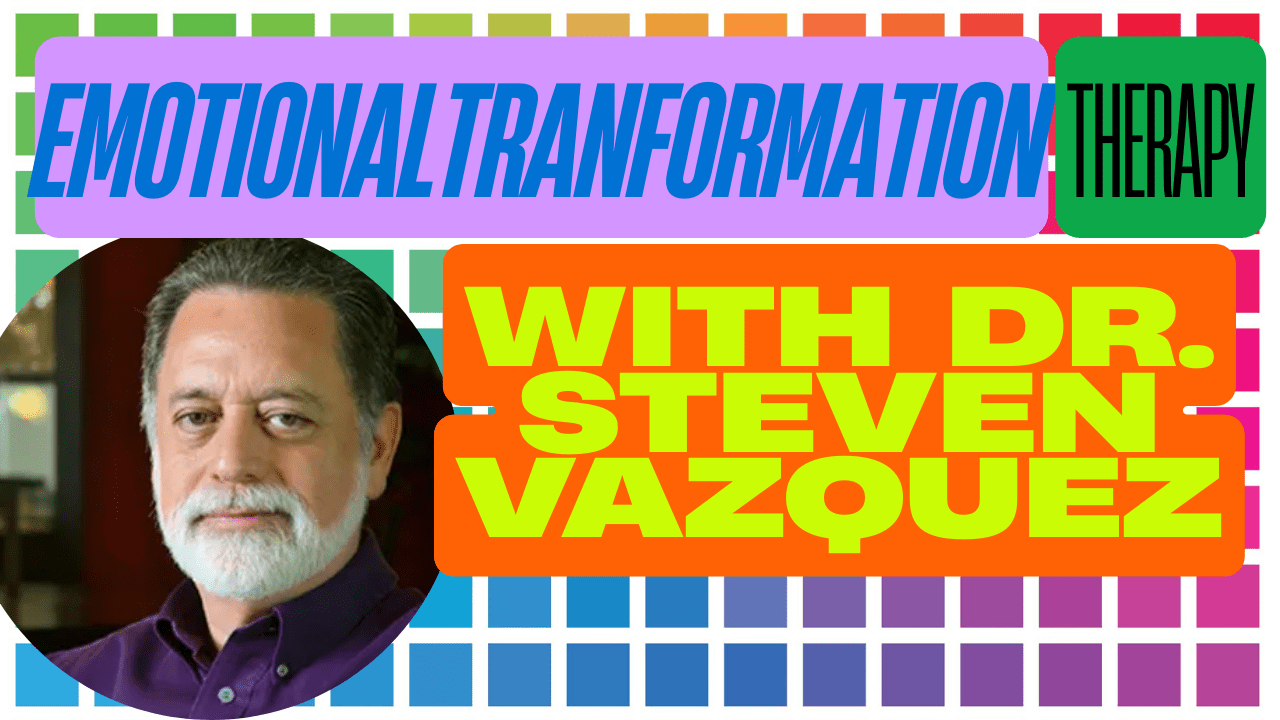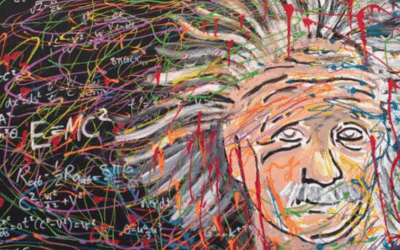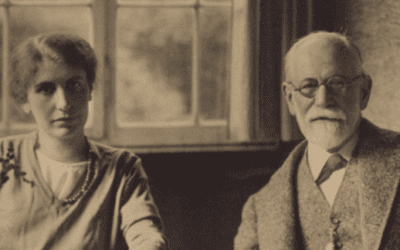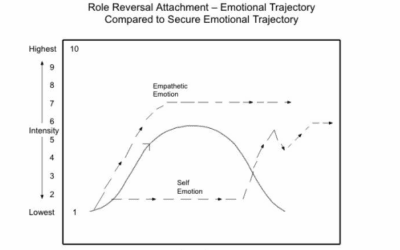Dr. Steven Vasquez’s Revolutionary Emotional Transformation Therapy
In the ever-evolving landscape of psychotherapy, few innovations challenge our fundamental understanding of healing as profoundly as Emotional Transformation Therapy (ETT). Developed by Dr. Steven Vasquez over 25 years of clinical practice and research, ETT represents a paradigm shift in how we approach trauma, emotional regulation, and psychological healing. This groundbreaking therapeutic modality harnesses the power of light, color, and eye movement to access and transform deeply embedded emotional patterns that traditional talk therapy often struggles to reach. Find out how to get trained in ETT: https://www.etttraining.com/
The Unexpected Journey: From Skepticism to Science
The story of ETT’s development reads like a detective novel, filled with serendipitous discoveries and persistent scientific inquiry. Dr. Vasquez’s journey began not with a grand theory, but with careful observation and an open mind willing to explore the unexpected. His initial exposure to the therapeutic potential of colored light came through syntonic optometry—a specialized field where optometrists use colored light to correct vision problems. What captured his attention wasn’t the vision correction, but something far more intriguing: the emotional changes that occurred when patients were exposed to specific wavelengths of light.
“I noticed that when people were using that, emotional changes would take place,” Dr. Vasquez recalls. “I got intrigued with how the color affected emotional states more so than it correcting the vision.” This observation sparked a 25-year journey of exploration that would ultimately lead to the development of four distinct therapeutic devices and protocols that can address everything from PTSD and depression to physical pain and movement disorders.
The Neurobiology Revolution: Why Light Affects Emotion
To understand ETT’s effectiveness, we must first examine the neurobiological foundations that make light-based therapy possible. Contrary to popular belief, visual information doesn’t simply travel from the eyes to the occipital lobe where images are processed. Instead, approximately 90% of visual inputs take a more complex route, wrapping around the brain stem before reaching the visual cortex. This means we literally feel what we see before we consciously perceive it—a phenomenon that explains why certain colors can trigger immediate emotional responses.
This neurobiological pathway reveals why ETT can access emotional states that remain hidden from conscious awareness. The brain stem processes emotional and survival-related information with lightning speed, often triggering responses before our rational mind has time to intervene. When specific wavelengths of light stimulate these pathways, they can directly influence emotional regulation systems, stress responses, and even physical pain mechanisms.
Dr. Vasquez explains the profound implications: “Emotions become more susceptible to change when you’re experiencing them. So it’s the memory reconsolidation theory that can kind of explain a lot of how the board is working.” This principle—that emotional memories become malleable when activated—forms the cornerstone of ETT’s therapeutic approach.
The Four Pillars of ETT: A Multi-Modal Approach
ETT’s comprehensive system consists of four primary therapeutic tools, each designed to address different aspects of trauma and emotional dysfunction:
1. The Spectral Resonance Chart: A Window into Dissociation
The spectral resonance chart appears deceptively simple—seven intensely saturated colors arranged in precise wavelengths. However, this French-manufactured tool serves as perhaps the most sensitive diagnostic instrument for detecting dissociation ever developed. When clients look at specific colors while discussing emotional material, their ability to perceive those colors can dramatically change, revealing hidden dissociative states.
“If you can’t see the color in front of you, basically you’re not here psychologically,” Dr. Vasquez explains. “This is one of the most incredible tools for identifying dissociation. Most of the clients I get who have seen other therapists have been dissociative, but the other therapists didn’t know it.” The immediate, objective nature of this assessment makes it invaluable for therapists who have struggled to identify dissociative responses in their clients.
2. Peripheral Light Stimulation Goggles: Accessing Internal Parts
The development of ETT’s specialized goggles emerged from Dr. Vasquez’s exploration of work by Harvard psychiatrist Dr. Schiffer, who had developed “lateralized glasses” that blocked light from entering specific sides of the visual field. However, Dr. Vasquez’s innovation went far beyond the original left-brain/right-brain paradigm. By experimenting with light entering at different angles—12 o’clock, 6 o’clock, 3 o’clock, and 9 o’clock positions—he discovered that each angle could activate different internal psychological and physiological states.
This discovery has profound implications for parts-based therapy approaches like Internal Family Systems (IFS). “We discovered a whole way to identify internal parts—internal psychological parts and physiological parts—by peripheral eye stimulation,” Dr. Vasquez notes. The applications extend beyond psychology into medicine, with documented cases of sciatica pain, asthma, and even cancer pain being eliminated through specific goggle protocols.
3. Multi-Dimensional Eye Movement: Beyond Traditional EMDR
While EMDR (Eye Movement Desensitization and Reprocessing) has gained widespread acceptance in trauma therapy, Dr. Vasquez’s multi-dimensional eye movement approach represents a significant evolution of the technique. Developed independently through years of observing clients’ eye movements during emotional processing, this method can resolve severe trauma in remarkably short timeframes—often 5 to 10 minutes.
The technique proves particularly effective for visually-initiated trauma and acute emotional distress. Dr. Vasquez shares a powerful example: “One gentleman I used it with came home one day and looked out his window and saw his 16-year-old son hanging dead from a tree. He couldn’t get that picture out of his mind, and we neutralized it in 10 minutes.” While grief processing continued, the fixated visual image that was causing ongoing trauma was eliminated.
4. The Light Device: Integrating All Modalities
The most technologically advanced component of ETT, the light device has evolved through seven iterations over 25 years. Starting with a primitive device offering 11 colors, current technology provides access to over 16 million color variations, each calibrated to specific wavelengths that affect different brain regions and emotional states.
This device can incorporate multiple therapeutic elements simultaneously: specific color wavelengths, variable flicker rates, and different intensities. The flexibility allows therapists to customize treatments for individual clients while addressing multiple therapeutic goals within a single session.
Breakthrough Cases: When Science Meets Transformation
The clinical outcomes achieved through ETT often challenge conventional understanding of what’s possible in psychotherapy. Dr. Vasquez shares several cases that illustrate the profound changes possible when neurobiological interventions target specific brain systems:
The Arthritis Case: Physical Pain and Emotional Trauma
One of Dr. Vasquez’s earliest discoveries involved a woman with severely gnarled arthritic hands who had experienced chronic pain for 15 years. Traditional medical interventions had failed, but when exposed to orange light during therapy, “all the pain went away—that quickly.” This case revealed the deep connections between emotional trauma and physical manifestations, suggesting that addressing underlying emotional patterns could produce dramatic physical healing.
Birth Trauma and Osteoporosis: Lifelong Patterns Resolved
One particularly compelling case involved a man whose birth trauma had created a lifelong pattern affecting his bone density. During birth, both mother and baby experience temporary bone softening. When trauma occurs during this vulnerable period, it can create lasting physiological impacts. After addressing the birth trauma through eye movement therapy, the man’s osteoporosis—which had resisted all other treatments including Chinese medicine—completely resolved.
The Neuroscience Behind Specific Wavelengths
Dr. Vasquez’s 25 years of clinical observation have revealed that different wavelengths of light affect specific brain regions in predictable ways. Two discoveries stand out as particularly significant:
Movement Disorders and the Substantia Nigra
Specific wavelengths of red light appear to directly influence the substantia nigra within the basal ganglia—the brain region responsible for movement control. This discovery has profound implications for treating involuntary movement disorders ranging from ADHD hyperactivity to Parkinson’s disease. “We literally see people’s involuntary movement stop,” Dr. Vasquez explains. Brain scans of clients with restless leg syndrome showed complete normalization of the affected brain region, with changes maintaining stability even a year later.
Boundary Disruption and the Temporal-Parietal Junction
Research indicates that trauma survivors face significantly higher risks of re-traumatization. Women who have been sexually assaulted, for example, are four times more likely to experience assault again. Dr. Vasquez attributes this to trauma’s impact on the temporal-parietal junction—the brain region responsible for distinguishing self from others.
“Once you’ve disrupted that part of the brain, it doesn’t work that way anymore, and you’re more susceptible to being affected by external stimuli,” he explains. Specific wavelengths between red and orange can restore function to this crucial brain region, potentially protecting trauma survivors from future victimization by rebuilding their capacity to maintain appropriate boundaries.
Beyond Talk Therapy: Accessing the Unconscious
Traditional psychotherapy often relies on conscious processing, verbal insight, and cognitive restructuring. While these approaches have value, they may miss crucial emotional patterns operating below the threshold of awareness. ETT’s ability to access unconscious emotional states represents a significant advancement in therapeutic capability.
“It’s a repression, an avoidance defense that over time becomes automatic, and all these buried emotions pile up inside a person, affect them, but the person themselves doesn’t even know where they’re coming from,” Dr. Vasquez explains. “With ETT, almost every session people have new awarenesses—the sources, the roots of their anxiety or their depression become clear.”
This capacity to bring unconscious material into awareness rapidly accelerates therapeutic progress. Rather than spending months or years exploring possible emotional patterns, clients can quickly identify and address the specific emotions driving their symptoms.
Clinical Applications: From ADHD to Addiction
ETT’s versatility extends across a wide range of psychological and physical conditions. Dr. Vasquez has developed specific protocols for:
- ADHD: Three-week elimination programs that address underlying emotional dysregulation rather than just managing symptoms
- Addiction: Multi-week protocols that target the emotional drivers of addictive behaviors
- Depression and Anxiety: Approaches that identify and resolve root emotional causes rather than just symptom management
- Physical Pain: Techniques that address the emotional components of chronic pain conditions
- Sleep Disorders: Protocols that resolve underlying stress and trauma patterns affecting sleep
- Relationship Issues: Couple therapy applications that address each partner’s individual emotional patterns
Training and Certification: Making ETT Accessible
Recognizing the need to train qualified practitioners, Dr. Vasquez has developed a comprehensive seven-level certification program:
- Level 1: Multi-dimensional eye movement and spectral chart usage
- Level 2: Light device and peripheral light stimulation goggles
- Level 3: Applications for depression, anxiety, trauma, and OCD (ETT Complex Trauma Therapist certification)
- Level 4: Somatic issues including physical pain and stress-related illness
- Level 5: Spiritual and religious issues
- Level 6: Addiction-focused applications
- Level 7: Couple therapy techniques
This structured approach ensures that practitioners develop competency gradually while building a comprehensive understanding of ETT’s multiple applications.
Integration with Existing Therapeutic Models
ETT doesn’t require therapists to abandon their existing training or theoretical orientations. Instead, it enhances and accelerates established therapeutic approaches. Dr. Vasquez notes that the therapeutic relationship remains crucial to success: “No matter what the mental health approach is, the single factor that shows up to be the most significant is the bond between the therapist and the client.”
Practitioners trained in EMDR, Internal Family Systems, somatic therapies, and traditional talk therapy find that ETT provides powerful tools for accessing material that might otherwise remain hidden or take extensive time to surface. The immediate, objective feedback provided by color distortions and physical responses gives both therapist and client clear indicators of progress and areas needing attention.
The Future of Trauma Therapy
As our understanding of neurobiology advances, therapeutic approaches like ETT represent the future of psychological healing. By working directly with the brain’s visual and emotional processing systems, these methods can produce changes that might seem impossible from traditional psychological perspectives.
The objective, measurable nature of ETT’s interventions also addresses a longstanding challenge in psychotherapy: the difficulty of demonstrating concrete progress. When clients can literally see colors disappear and reappear, feel physical pain resolve, or experience immediate emotional shifts, both therapist and client have clear evidence of therapeutic movement.
Implications for Mental Health Care
ETT’s development raises important questions about the future direction of mental health treatment. As we move away from purely symptom-based approaches toward interventions that address root neurobiological patterns, we may see dramatic improvements in treatment effectiveness and duration.
The potential applications extend beyond individual therapy into areas like medical treatment, where addressing emotional trauma might significantly impact physical healing. The integration of psychological and medical treatment may become not just beneficial but essential for comprehensive patient care.
A New Paradigm for Healing
Dr. Steven Vasquez’s development of Emotional Transformation Therapy represents more than just another therapeutic technique—it embodies a fundamental shift in how we understand and treat psychological distress. By harnessing the power of light, color, and the brain’s visual processing systems, ETT offers hope for clients who have struggled with traditional therapeutic approaches.
The documented cases of rapid transformation—from eliminating decades-old arthritis pain to resolving colorectal cancer—challenge our assumptions about what’s possible in healing. While such outcomes may seem extraordinary, they become comprehensible when viewed through the lens of neurobiological intervention and the intricate connections between emotional states and physical health.
For therapists seeking to expand their therapeutic toolbox and enhance their ability to help clients achieve lasting change, ETT offers a scientifically grounded, empirically supported approach that can accelerate healing across a wide range of conditions. As Dr. Vasquez notes, “There’s no way you could have burnout on this. It’s too exciting. When you see a person make a major turnaround, you’re not going to get burned out—you’re going to get excited.”
The future of psychotherapy may well lie in approaches that integrate our growing understanding of neurobiology with the art of therapeutic relationship. ETT represents a significant step toward that future, offering hope for more effective, efficient, and transformative healing experiences for both therapists and the clients they serve.


























0 Comments